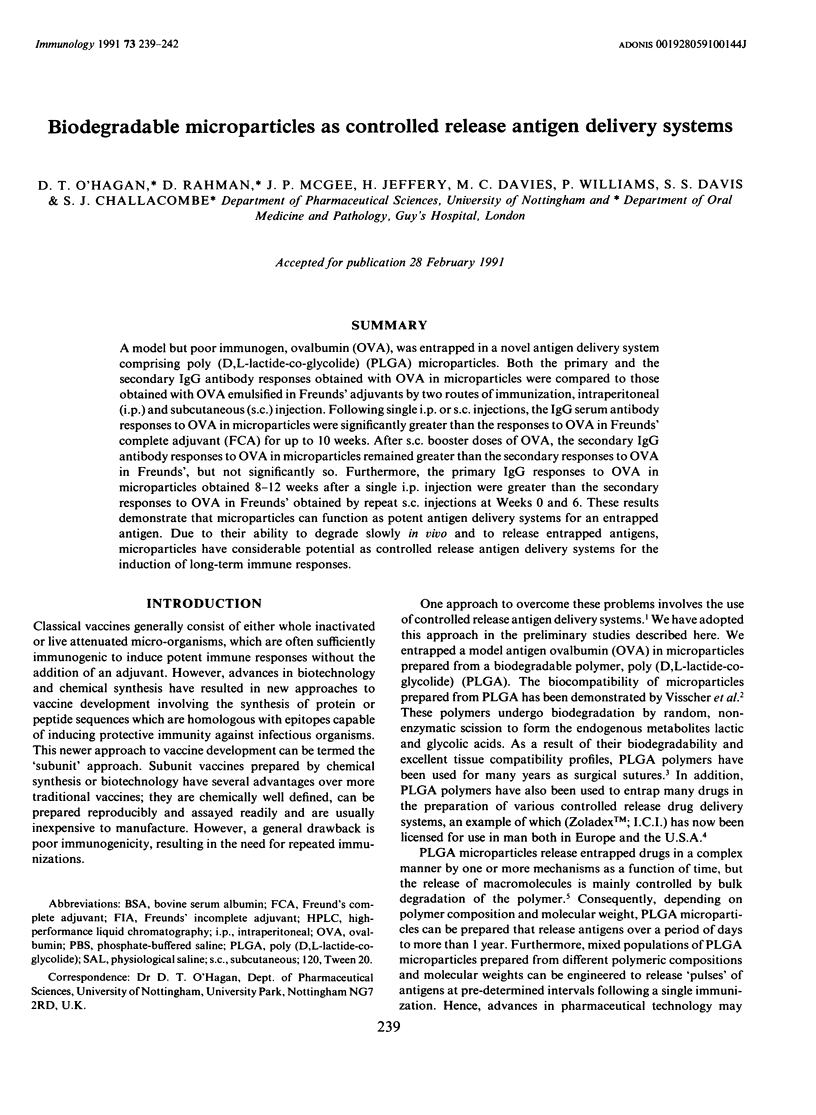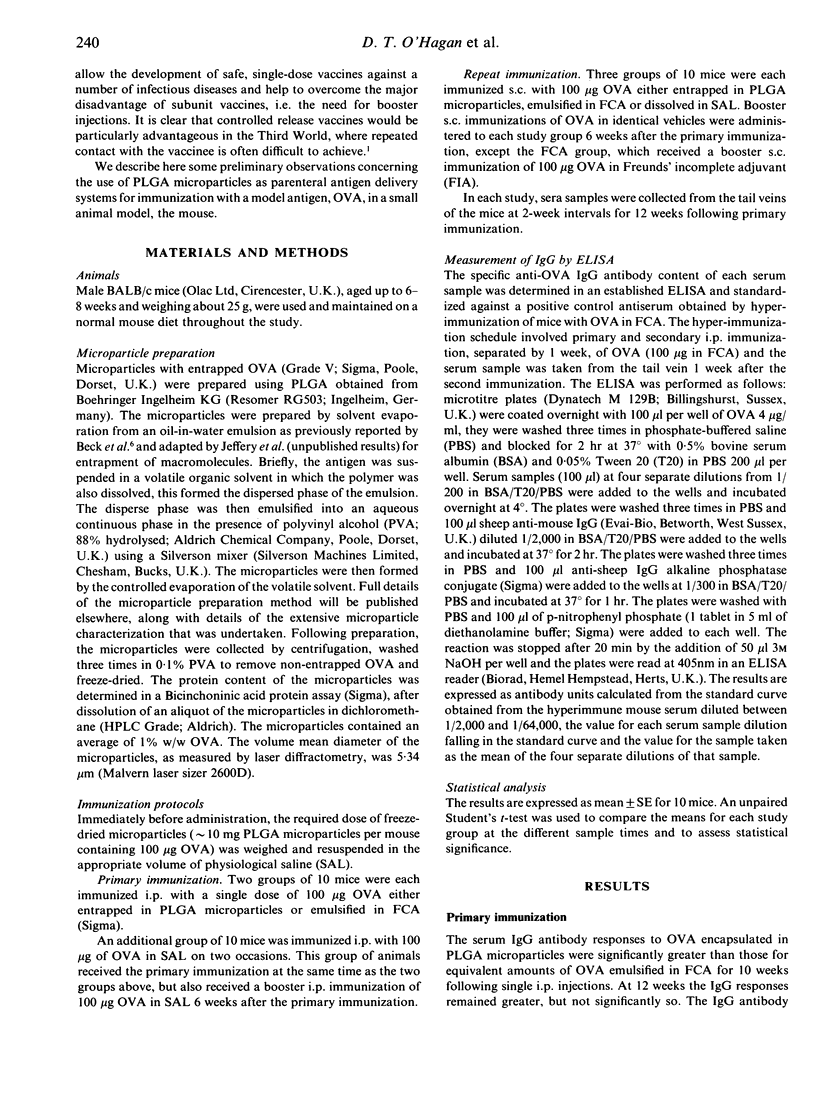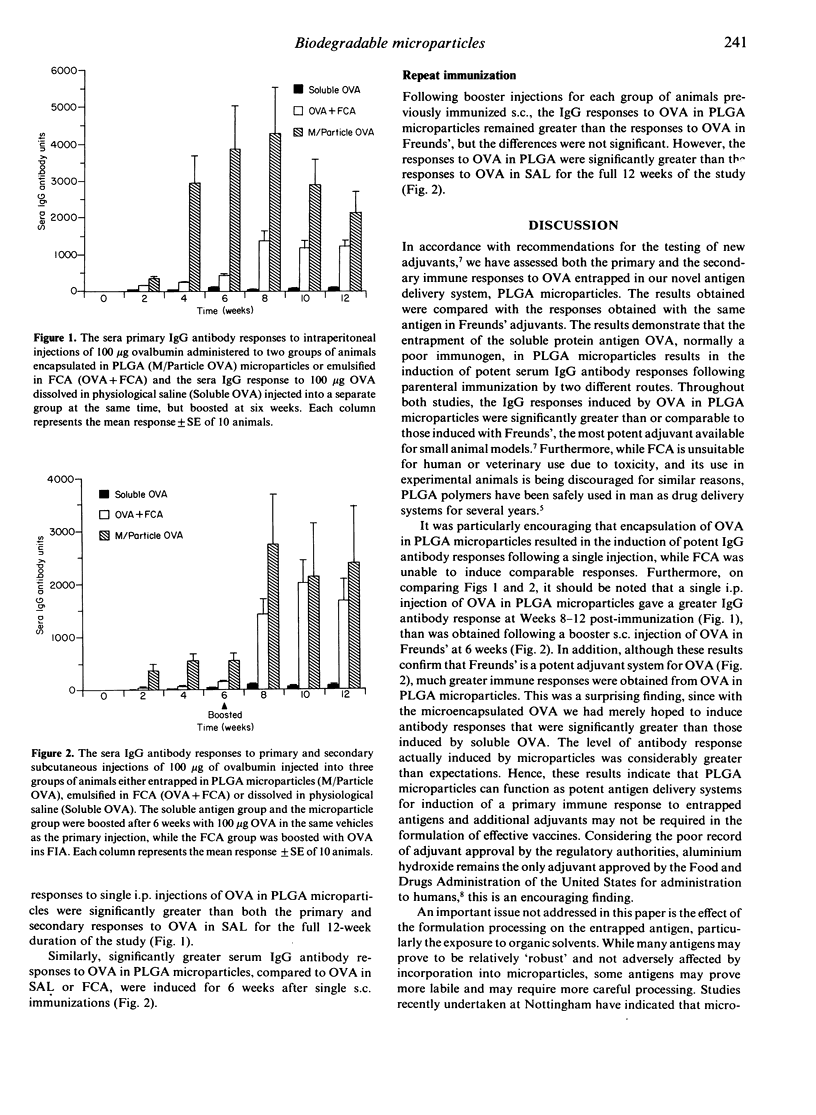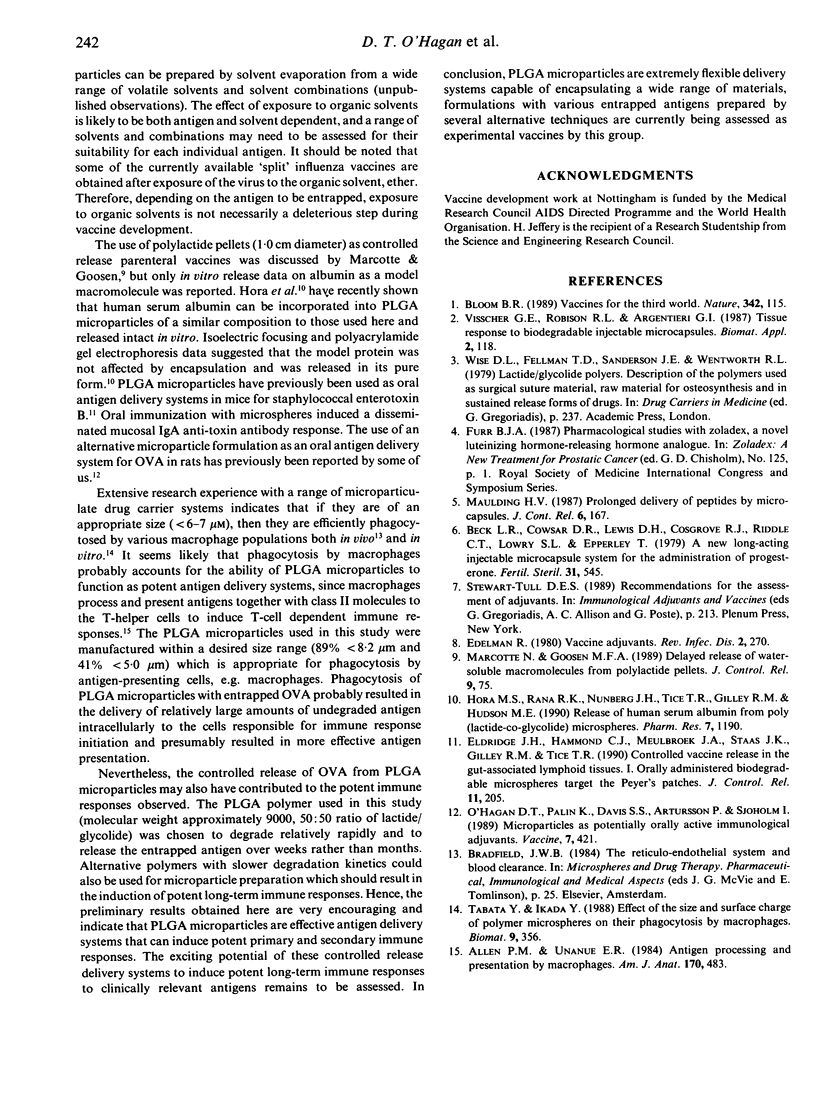Abstract
A model but poor immunogen, ovalbumin (OVA), was entrapped in a novel antigen delivery system comprising poly (D,L-lactide-co-glycolide) (PLGA) microparticles. Both the primary and the secondary IgG antibody responses obtained with OVA in microparticles were compared to those obtained with OVA emulsified in Freunds' adjuvants by two routes of immunization, intraperitoneal (i.p.) and subcutaneous (s.c.) injection. Following single i.p. or s.c. injections, the IgG serum antibody responses to OVA in microparticles were significantly greater than the responses to OVA in Freunds' complete adjuvant (FCA) for up to 10 weeks. After s.c. booster doses of OVA, the secondary IgG antibody responses to OVA in microparticles remained greater than the secondary responses to OVA in Freunds', but not significantly so. Furthermore, the primary IgG responses to OVA in microparticles obtained 8-12 weeks after a single i.p. injection were greater than the secondary responses to OVA in Freunds' obtained by repeat s.c. injections at Weeks 0 and 6. These results demonstrate that microparticles can function as potent antigen delivery systems for an entrapped antigen. Due to their ability to degrade slowly in vivo and to release entrapped antigens, microparticles have considerable potential as controlled release antigen delivery systems for the induction of long-term immune responses.
Full text
PDF



Selected References
These references are in PubMed. This may not be the complete list of references from this article.
- Allen P. M., Unanue E. R. Antigen processing and presentation by macrophages. Am J Anat. 1984 Jul;170(3):483–490. doi: 10.1002/aja.1001700319. [DOI] [PubMed] [Google Scholar]
- Beck L. R., Cowsar D. R., Lewis D. H., Cosgrove R. J., Jr, Riddle C. T., Lowry S. L., Epperly T. A new long-acting injectable microcapsule system for the administration of progesterone. Fertil Steril. 1979 May;31(5):545–551. doi: 10.1016/s0015-0282(16)44002-1. [DOI] [PubMed] [Google Scholar]
- Bloom B. R. Vaccines for the Third World. Nature. 1989 Nov 9;342(6246):115–120. doi: 10.1038/342115a0. [DOI] [PubMed] [Google Scholar]
- Hora M. S., Rana R. K., Nunberg J. H., Tice T. R., Gilley R. M., Hudson M. E. Release of human serum albumin from poly(lactide-co-glycolide) microspheres. Pharm Res. 1990 Nov;7(11):1190–1194. doi: 10.1023/a:1015948829632. [DOI] [PubMed] [Google Scholar]
- O'Hagan D. T., Palin K., Davis S. S., Artursson P., Sjöholm I. Microparticles as potentially orally active immunological adjuvants. Vaccine. 1989 Oct;7(5):421–424. doi: 10.1016/0264-410x(89)90156-4. [DOI] [PubMed] [Google Scholar]
- Tabata Y., Ikada Y. Effect of the size and surface charge of polymer microspheres on their phagocytosis by macrophage. Biomaterials. 1988 Jul;9(4):356–362. doi: 10.1016/0142-9612(88)90033-6. [DOI] [PubMed] [Google Scholar]
- Visscher G. E., Robison M. A., Argentieri G. J. Tissue response to biodegradable injectable microcapsules. J Biomater Appl. 1987 Jul;2(1):118–131. doi: 10.1177/088532828700200103. [DOI] [PubMed] [Google Scholar]


